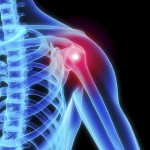Brian Schiff’s Blog
Injury Prevention, Sports Rehab & Performance Training Expert
At times, athletes I work with have shoulder or low back pain that is related to restrictions in the thoracic spine. Rotational sports rely upon adequate mobility in the thoracic spine to ensure proper force transmission throughout the body’s kinetic chain. This exercise featured in one of my recent PFP online columns is a nice corrective exercise or mobility drill that can be used to optimize t-spine mobility and resolve any asymmetries.
Keep in mind that forcing through pain or stiffness is not advisable. This exercise can be done daily or as part of the warm-up routine.
Pectoralis minor tightness coupled with kyphosis often leads to postural dysfunction, limited thoracic mobility and shoulder problems. This can increase injury risk for overhead athletes, Olympic lifters and fitness enthusiasts participating in regular weight training.
This exercise is from one of my columns for PFP Magazine, and it can be integrated as part of a warm-up/movement prep session prior to engaging in overhead sports or lifting activities. In addition, it can serve as a daily corrective to improve shoulder mobility and posture. Finally, it can be used in recovery and the cool-down to address soft tissue tightness in the chest. When used post-workout, I suggest a slightly longer hold time to emphasize more passive stretching when force production is not a concern.
Click here to read the entire column including details on the execution.
I work with a lot of baseball players in my clinic. In many cases, I see similar issues and recurring problems in them, especially pitchers. Some of these issues include:
- Scapular dyskinesia
- Limited thoracic spine mobility (extension and/or rotation)
- Soft tissue tightness (lats, post shoulder, pec major/minor)
- Poor muscular strength/endurance in the rotator cuff and scapular stabilizers
- Glenohumeral internal rotation deficit (GIRD)
I integrate routine mobility exercises for my throwers, as well as other overhead athletes (tennis, swimming, volleyball, etc) to better prepare them for training and their sport, as well as prevent poor mechanics and compensatory motion that may lead to aberrant stress on the rotator cuff and labrum.
The following video reveals five of my preferred exercises using a foam roller to improve thoracic spine mobility, decrease latissimus tightness, and stretch the pec major/minor while facilitating lower trapezius activation.
In order you will see:
- Lat rolling
- T-spine extension in supine
- T-spine extension coupled with lat stretch
- T-spine rotation
- Retraction and downward rotation
I advise performing 5-10 repetitions of each prior to training and sport. These will help improve performance, optimize overhead mechanics and reduce injury risk associated with overhead sports.
Many of my clients need to improve shoulder and pillar stability. Combating poor glenohumeral and scapular stability and insufficient trunk stability is a must to reduce injury risk, resolve shoulder and back pain and eliminate compensatory motion with exercise, sport and life.
The following two exercises are “go to” ones I utilize to do just this.
The links above are for two recent exercise columns I authored for PFP Magazine. These exercises include load bearing using the client’s bodyweight and include progressions and regressions.
This is a follow-up from my previous post. Limited thoracic spine rotation can be detrimental for the shoulders, low back and lower extremities with sports and strength and conditioning activity. Consider the impact of asymmetry or stiffness on a golfer, swimmer, thrower, tennis player or even someone doing rotational and pressing working the gym.
Asymmetrical and repetitive activity can lead to deficits as can faulty positions during work and daily life. This simple exercise with the foam roller can be helpful in facilitating optimal mobility and better kinetic chain motion. This video comes from my ‘Functionally Fit’ column for PFP Magazine.



